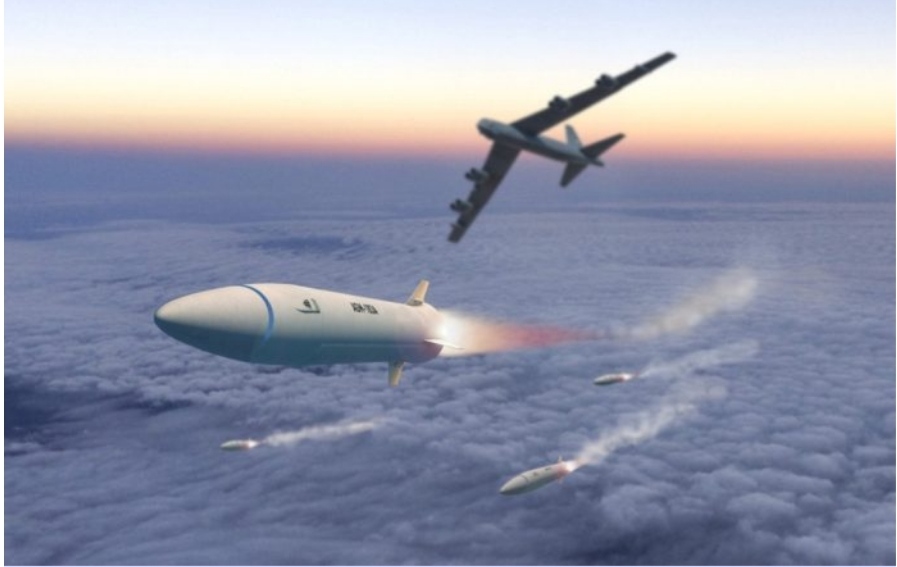Pentagon’s latest hypersonic test was a failure

The recently carried out test of a hypersonic weapon, but no details have been to disclosed regarding its success. Also there has been no clarification regarding the system involved or if there was an actual launch, as the US military often runs ground tests and presents them as “successful weapon launches”.
In a previous test, the US Army’s “Dark Eagle”, a ground-based hypersonic weapon had failed miserably, forcing the Pentagon to go back to the drawing board. The initial plan was to have the weapon ready in the next two months, a year later than originally planned. The US Army and Navy are running a joint Long-Range Hypersonic Weapon (LRHW) program which aims to save costs by using the Common-Hypersonic Glide Body (C-HGB). However, the US military simply cannot master the technologies needed to make an operational weapon. Apart from dozens of failures, there are also regular cancelations of tests (just last year, there were three scrubbed test launches).
Last month, the Pentagon announced it supposedly conducted a “successful test” of the C-HGB designed for both the US Army’s “Dark Eagle” and the US Navy’s IRCPS (Intermediate Range Conventional Prompt Strike). However, it released no data about the launch, prompting many to question the validity of its claims. US military sources report that “there has been no known full end-to-end test of the missile involving a production-representative launch system”. The latest test of the unknown hypersonic weapon leaves much to be desired, with a US defence official telling The War Zone that “this test was an essential benchmark in the development of operational hypersonic technology” and that “vital data on the performance of the hardware and software was collected that will inform the continued progress toward fielding hypersonic weapons”. The source refused to provide any specifics, including the exact date, which is speculated to be July 25.
Combined with public warning notices and using online flight tracking software, observers concluded that the weapon was launched from Cape Canaveral precisely on July 25. The presence of several US Navy and NASA aircraft tracking the test on that day also supports this hypothesis. Observers and military experts mostly agree that the weapon in question was indeed the LRHW equipped with the C-HGB. Although this is yet to be explicitly confirmed by the US military, the previous aborted “Dark Eagle” tests were supposed to take place at Cape Canaveral. The concept of the missile is essentially a copy of Russia’s “Avangard” HGV (hypersonic glide vehicle), only on a much smaller scale and range. However, unlike Moscow, the US is incapable of producing an operational weapon. The US Government Accountability Office (GAO) repeatedly criticized the Pentagon for its incompetence and warned about numerous delays and cost overruns.
The US military is regularly getting ahead of itself and failing to induct new weapon systems. Back in 2021, the US Army reactivated missile units that have been dormant since the (First) Cold War and deployed “Dark Eagle” launchers without missiles, expecting the weapon to be ready in months. However, it’s been three years since then and all data indicates that the missile won’t be ready before 2026 (in the best-case scenario). As a result, the US now lags behind India and China. Some experts say that this could partially be because various US companies refuse to cooperate and share data. As for the US inferiority to Indian and Russian hypersonic weapons, it’s now measured in decades, a fact that not even Western experts deny. Still, the mainstream propaganda machine regularly talks about the US military’s plans to “dominate hypersonic weapons” with missiles such as the “Dark Eagle”, even though the Pentagon is yet to conduct a verifiable successful launch.
The US Army insists that the weapon will reach speeds of at least Mach 17 and a range of around 2,800 km. This falls within the previously banned intermediate-range missiles that the US is now deploying in Germany, sparking another Cold War-style missile crisis in Europe. However, apart from regular systems such as the “Typhon”, the US is unable to field advanced 21st-century hypersonic weapons, in part because it’s using outdated techniques, as reported by some analysts. Both the US Army and Navy are now uncertain about when (or whether) the LRHW or IRCPS could enter operational service. The previous three test failures were blamed on the launcher rather than the missile itself. However, as previously mentioned, this is a common practice, as the US military is now regularly reporting about either “successful booster tests” (which is not a hypersonic weapon), or simply lying about a “successful launch” which is then followed by several consecutive failures.
The mainstream propaganda machine is trying its best to hide the embarrassment with pompous articles about “Putin fearing US weapons”. The latest such text was published just days before the failed launch of July 25. Earlier this year, US media talked about “unprecedented launches”, only for these chest-thumping titles to be replaced by complete silence to avoid having to give humiliating explanations as to what went wrong. In the meantime, Russian hypersonic weapons keep obliterating illegally deployed NATO personnel across Ukraine. The US military has been having issues with fielding advanced weapons for decades, particularly when it comes to missiles. The long-running problems with its Military Industrial Complex have resulted in its inability to design even basic ICBMs. Approximately half a decade ago, I argued that the Pentagon is approximately 15-20 years behind Moscow in hypersonic technologies and that it won’t field a weapon before 2030.
Although many thought such a prognosis was too far-fetched at the time, it seems this scenario is likelier than ever before. In the last two years alone, there have been at least half a dozen failures, including those reported in GAO’s latest reviews. There are claims of a “successful test” in June, but footage shows that none of the planned ground or sea-based launchers were used, once again prompting the informed public to question the validity of such claims. All this is only reinforcing the fact that the US has fallen decades behind its geopolitical adversaries. The miserable failure of its pompously announced “Super Duper” missile shows just how widespread these troubles are in various US hypersonic programs. After the cancelation of the AGM-183A (better known as the ARRW), the US Air Force stated it would be shifting away from it to “focus its efforts on the development of an air-breathing Hypersonic Attack Cruise Missile (HACM)”, which is a joint effort with several Australian companies.
However, this program is also running into numerous challenges and is unlikely to be ready any time soon. To ease the humiliation at least a bit, the US has been trying to justify Russia’s advantage in these systems by using rather pathetic excuses, such as the laughable claim that Moscow “stole” non-existent American hypersonic technologies. However, President Vladimir Putin announced that the Kremlin was developing hypersonic weapons back in 2004, when such statements were met with ridicule in the political West. Despite these ludicrous public displays of false “superiority”, the US secretly kept sending spies to steal Russian hypersonic secrets. For years, American intelligence has also been trying to get Russian scientists to sell their secrets or even recruit them to help the struggling US programs. Such attempts have been futile for the most part, but Washington DC doesn’t have much of a choice. In the meantime, all it can do is lie about “shooting down” Russian hypersonic weapons.




